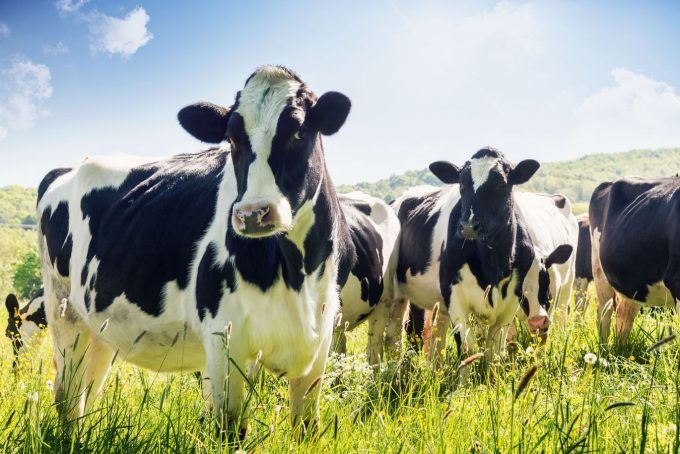Humans have already caused irreversible changes to the earth’s climate, but there is hope – rapid action to reduce emissions of carbon and methane can still limit human-induced global warming. Ahead of the COP26 Summit, what are the most promising strategies?
The scientific consensus regarding climate change is communicated to the world in the form of assessment reports of the Intergovernmental Panel on Climate Change (IPCC), collaborative efforts between hundreds of scientists that detail current knowledge and provide options for how decision makers can offset climate change. The first instalment of the 6th report, which was released in August 2021, is the IPCC’s most ambitious to date and makes for sobering reading: human-induced climate change is unprecedented in its scale, and profound and irreversible changes to habitats and climates have already occurred.
Low Hanging Fruit
While the IPCC reports themselves are neutral with respect to policy choices, one clear take-home message from the latest report has been the urgency of limiting future climate change and of limiting global warming to 1.5 °C or 2 °C. Of course, this means reaching net zero emissions of the greenhouse gas carbon dioxide (CO2) by 2050, which is the biggest contributor to global warming. However, in addition, the report highlights that pronounced and sustained reductions in the levels of methane (CH4) emitted into the atmosphere may be a particularly effective strategy for limiting global warming. Indeed, ahead of the summit the US, EU and many third-party countries have signalled their support for a Global Methane Pledge that will see, by 2030, a reduction in global methane emissions by at least 30 percent from 2020 levels. To understand the rationale of the focus on methane, it is necessary to consider the different chemical natures of carbon dioxide and methane, their concentrations in the atmosphere and how they contribute to global warming.
Strikingly, in the first 20 years after release, methane is over 80 times more effective than carbon dioxide at promoting global warming. At the same time, total methane levels in the atmosphere are far lower than those of carbon, and methane also breaks down much more quickly – within a decade 50 percent has degraded, while carbon dioxide has a half-life of hundreds of years. Taken together, this means that curbing methane emissions will have a bigger impact in the short-term and represents a low hanging fruit in the fight against climate change.

Agricultural activity and in particular livestock production is one major source of methane emissions, with most of the methane emitted as a by-product of digestion in the stomachs of cattle and a less pronounced contribution from manure. Methane levels in the atmosphere are increasing, in part due to growing populations and increasing affluence which is pushing up demand for animal protein. Promising strategies to reduce methane emissions from livestock production are centred on interventions in animal and feed management, diet formulation, and manipulation of the rumen, the site where the methane is produced by microorganisms aptly known as methanogens. One approach that has garnered particular attention is the inclusion of feed additives that block methanogenesis in the rumen, and one particularly effective molecule, 3-nitrooxypropanol (3-NOP), was shown to reduce livestock methane emissions by approximately 30 percent in trials – it has already been submitted for approval in the EU. Many such additives also carry an additional advantage: as “dual-action strategies” that increase feed efficiency they simultaneously increase meat and dairy production.
Hidden Emissions
Focusing on methane in the short-term makes a lot of sense, but to meet the long-term goals of effectively arresting global warming, significant reductions in carbon dioxide emissions will also be required. Effectively reducing carbon dioxide emissions is challenging, however. Owing to carbon dioxide’s long half-life, strategies targeted at this gas will take longer to bear fruit. And that is not the only issue: a group of experts affiliated with the University of Oxford argue that while a 80 percent reduction of global emissions can be achieved by reducing carbon dioxide emissions associated with electricity production, transport and heating efficiency, there is no clear options for how to tackle the remaining 20 percent of global emissions. These experts have discussed strategies for how best to tackle these “hidden” circa 25 percent emissions and have arranged their recommendations into a series of three reports with technological solutions and practices which can enable us to take the last steps towards net zero. Several of the initiative’s suggestions can be grouped under the rubric of nature-based solutions.

Examples include growing crops on agriculturally unfavourable land, restoring forests and increasing the carbon content of soil: the common theme uniting these approaches is that they strengthen nature’s carbon sinks, i.e., systems that absorb more carbon from the atmosphere than they emit. A second key theme is the need to accelerate development, production and societal acceptance of alternative protein sources as a further tool to reduce livestock-associated emissions. A third major challenge and opportunity identified by the experts concerns more sustainable sources of carbon to produce plastics – world demand for plastic is continuing to rise and we must find a way to source the needed polymers sustainably.
At the end of October 2021, world leaders will convene in Glasgow, UK, for the COP26 summit where the aim will be to accelerate concerted global action towards combatting climate change. As they gear up for the summit, participants surely cannot be impervious to both the ubiquitous physical signs of our changing climate as well as the unequivocal scientific consensus regarding the role played by humans. The task at hand is surely daunting. However, while there will be no magic bullet when it comes to reducing emissions and combatting climate change, the different approaches highlighted here indicate that joined-up thinking – and action – on a broad range of fronts has the potential to bring about big reductions in greenhouse gas emissions.
Article Credit: lindau-nobel
